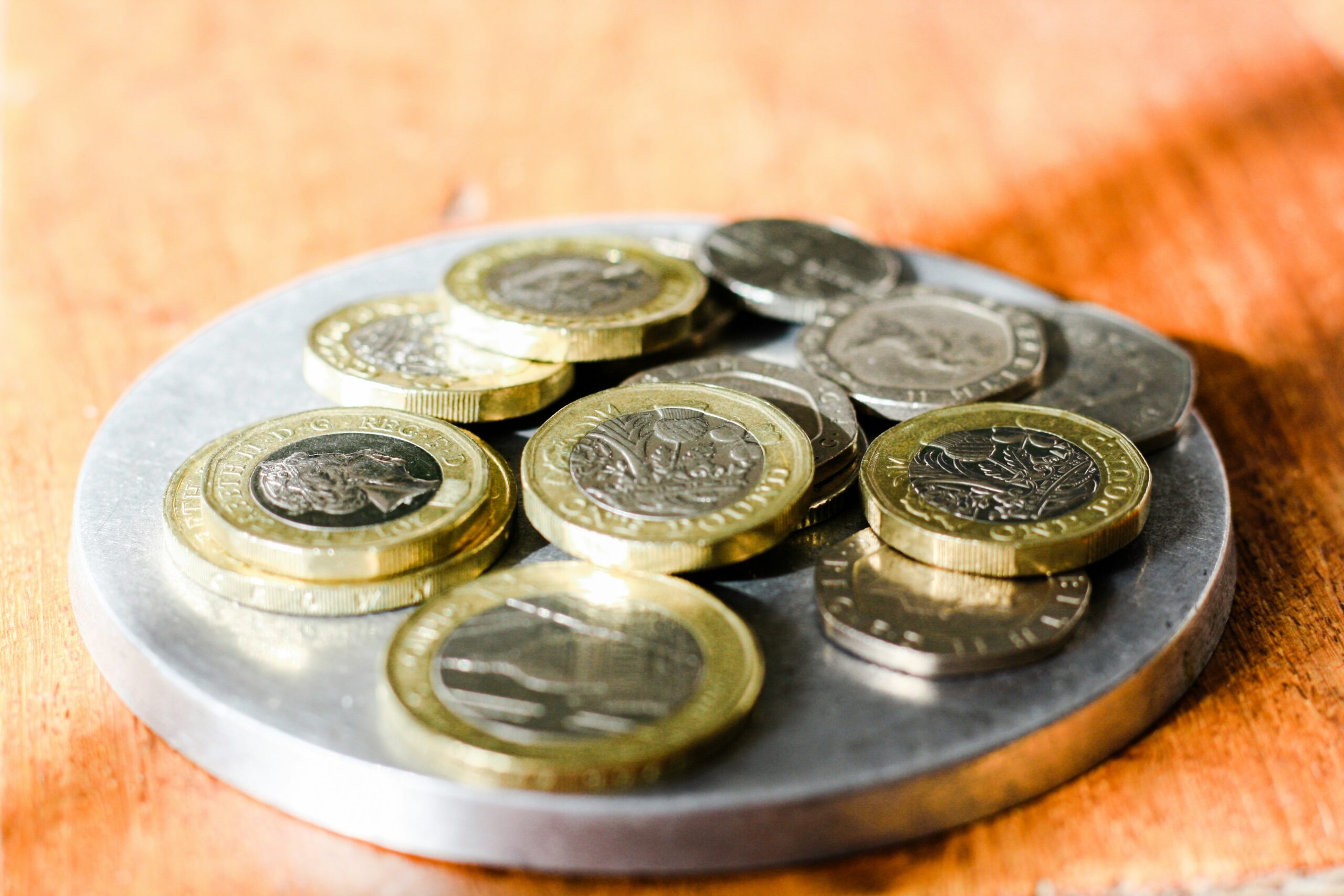Tax-Free Investments
Did you know you can legally grow your wealth without paying a penny in tax here in the UK? Yes, I mean no tax whatsoever- no capital gains tax, no dividend tax, no income tax, no tax at all! Sounds a bit too good to be true, right? In the UK, there are perfectly legal and legitimate ways to grow our money tax-free to help meet our financial goals; this could be saving for a house, retirement, or just wanting to build long-term wealth. Taking advantage of tax-free accounts is one of the ways we can boost our financial future and I want to use this post to explain what you need to know. I’ll cover one of the key things you need to understand to take advantage of tax-free growth- individual savings accounts (ISAs).
The information provided in this post is for general educational purposes only. It is not intended as personalised financial advice. Always consult a qualified financial advisor before making decisions about your financial situation
Understanding ISAs:
Individual savings accounts, commonly referred to as ISAs, are an excellent tool for many people to grow their wealth without paying anything to HMRC. There are four main types of ISAs (listed below), but the most important thing to understand about them is no matter how much money you build up in an ISA you do not have to pay any form of tax whatsoever when you withdraw your money. You are completely protected from the tax man, hence why ISAs are also known as tax wrappers. Yet amazingly, only a small percentage of the UK population takes advantage of this.
Another important detail to understand is the ISA limit. In the UK, you can contribute a maximum of £20,000 collectively across ISAs in each tax year. Let’s break this down using an example.
The tax year we are currently in at the time of writing is April 6th 2024-April 5th 2025. During each tax year, you are legally allowed to contribute a maximum of £20,000 to your ISAs. When the next tax year begins (April 6th 2025-April 5th 2026), your £20,000 limit resets. So the key takeaway is that you can contribute £20,000 each tax year, but since you can make further contributions in future tax years, your total pot of money in an ISA can exceed £20,000 over time. See the table below, which considers varying ISA contributions in different tax years; but remember, you can start from as little as £1!
| Tax year | Total ISA Contribution |
| 2024/2025 | £20,000 |
| 2025/2026 | £5,000 |
| 2026/2027 | £10,000 |
| 2027/2028 | £2,000 |
| Total Pot Built-Up | £37,000 |
What Are The Four Types of ISAs
Cash ISA
A cash ISA is a savings account, but you are completely protected from having to pay any tax on the interest you earn. Different providers of cash ISAs will offer varying interest rates, but the main takeaway is that no matter how much interest you earn, you do not have to pay a penny of tax. So if you had £20,000 in a cash ISA paying 5% interest, you would earn £1,000 in interest (£20,000 multiplied by 5%). This £1,000 is all yours and you wouldn’t have to pay any tax on it.
With a traditional savings account (i.e. not an ISA), there is a limit on how much interest you can earn before you pay tax. I’ll cover this in a future blog post to avoid over complicating the main message I am trying to get across. Overall, a cash ISA is a solid way of earning interest on your savings without having to worry about paying any tax.
Stocks and Shares ISA
A stocks and shares ISA is an investment account which allows you to invest in different types of assets (e.g. stocks and bonds) tax efficiently. Investing is one of the most powerful ways of building long-term wealth but it does pose some risk as investments can go up as well as down. However, I don’t want to use this post to focus too much on the investing side of things, but instead on why a stocks and shares ISA will protect you from having to pay potentially thousands and thousands of pounds in tax. No matter how much your investments grow, if they are held inside of a stocks and shares ISA you will not have to pay any capital gains tax, income tax, or dividend tax. Let’s use an example (but please note that returns in the stock market are not guaranteed).
Person X invests £10,000 into the stock market (not in property) using a general investing account (not a stocks and shares ISA) and averages a 9% return over 20 years. After 20 years, they would have £60,000. From a £10,000 investment person X has made £50,000 (£10,000—>£60,000). This is called a capital gain. In the UK, as of the 2024/2025 tax year, you have a capital gain allowance of £3,000 before paying any tax. Applying this, person X has a capital gain of £47,000 (£50,000 capital gain -£3,000 capital gain allowance=£47,000) of which they will have to pay tax. It gets a little more complicated as the exact tax owed will depend on your taxpayer status (10% for basic rate taxpayers, 20% for higher rate), but the tax owed could reach £9,400 (20% tax) if you are a higher-rate taxpayer.
Person Y does the same thing but invests using a stocks and shares ISA. The £50,000 capital gain is completely tax-free and person Y does not have to pay HMRC a single penny!
The examples above are hypothetical and are based on some assumptions but it is just to get you thinking about the power of using a stocks and shares ISA.
Tax rules and allowances are subject to change. Always check the latest government guidance or consult a financial professional before making investment decisions.
Lifetime ISA (LISA)
A LISA can be used to either save for your first home or retirement. You can open a LISA if you are aged between 18 and 39. Once open, you can make contributions until you are 50. The slight caveat with the LISA is that you can only use £4,000 of your £20,000 ISA limit to deposit into a LISA each tax year. But the bonus is that the government will boost your contribution by 25% in each tax year that you contribute. So if you were to deposit £4,000 into a LISA, it would be topped up by £1,000 (£4,000 x 25%) giving you a pot of £5,000. You can repeat this in the next tax year and have £10,000 and so on.
If you are using a LISA for retirement and you deposited £4,000 every year from age 18-50, you would deposit £128,000 (£4,000 x 32 years) and the government would give you £32,000 (£1,000 x 32 years) giving you a total pot of £160,000 (£128,000+£32,000). You can withdraw the money at age 60, and guess what- you don’t have to pay any tax. But remember, you can deposit from as little as £1, you don’t have to have £4,000 to start!
If using a LISA for your first house deposit (maximum home value of £450,000), it is a nice way to boost your overall savings. Myself and my partner both used LISA’s to save for our deposit for our first house, we benefitted from over 5 years of government bonuses which boosted our final deposit. You must have had a LISA for at least 12 months before using it for a first house deposit.
Whether you are saving for your first home or you are saving for retirement, the annual 25% bonus is extremely handy and you don’t have to pay any tax! The main drawback is if you withdraw funds for any reason other than for your first home or retirement, you will pay a 25% penalty which puts you at a slight loss.
You can invest in stocks and shares using a LISA which could offer further tax-free gains, but to avoid overwhelming you, I have not talked about that for this blog post.
Innovative Finance ISA
An innovative finance ISA is the least commonly used ISA in the UK; it is used for higher-risk investments such as peer-to-peer lending, crowdfunding, and property lending. I hesitate to talk too much about this ISA as I am less familiar with it but like with any ISA, any money you make is completely tax-free. It is generally used by experienced investors and those with a higher risk tolerance. Moreover, they are not protected by the Financial Services Compensation Scheme.
The £20,000 Annual ISA Limit Further Explained
As mentioned, you can collectively deposit £20,000 into your ISAs each tax year. However, it is critical to understand that you cannot deposit £20,000 into each type of ISA in the same tax year. You can spread your £20,000 ISA allowance across the different types of ISAs in each tax year; as long as your total ISA deposits in one tax year do not exceed £20,000- you will be fine. Please remember that the LISA does have a £4,000 limit. To make this as clear as possible, see the tables below which give examples of how ISA contributions can be spread in a single tax year. I have also (third table) given an example of what you cannot do.
£20,000 ISA Contribution (spread across multiple ISAs)
| Cash ISA | £3,000 |
| Stocks and Shares ISA | £13,000 |
| LISA | £4,000 |
| Total | £20,000 |
£20,000 ISA Contribution (in just one ISA)
| Cash ISA | £20,000 |
| Stocks and Shares ISA | £0 |
| LISA | £0 |
| Total | £20,000 |
Example of What is Not Allowed
| Cash ISA | £10,000 |
| Stocks and Shares ISA | £7,000 |
| LISA | £4,000 |
| Total | £21,000 |
£20,000 is the absolute maximum you can deposit collectively across your ISAs in each tax year, but not everybody (including myself) can save this much. That’s okay and ISAs can still be used. You may save roughly £5,000 in a year and you can spread this across the different types of ISAs depending on your financial goals.
Remember, the annual ISA deposit limit is £20,000. However, there is no limit on the total amount you can have in your ISA. As long as you stay within the annual contribution limit, your ISA balance can grow over the years, potentially exceeding £20,000.
Final Thoughts
ISAs are a powerful tool to grow your money without having to pay any tax. There are a range of different types of ISAs which are suited to different people with varying financial goals and risk appetites. What’s important is to understand that they are perfectly legal ways to minimise your exposure to tax here in the UK; so why not take advantage of them?
I’ve tried to bring together all of my knowledge of ISAs in one place to hopefully help you understand how they can be used. I may not have covered all the fine details, but the key takeaway is the tax efficiency you get out of using ISAs. Tax rules may of course change in the future and it is important to keep up to date.
This link on the government website will include all of the latest ISA updates.
Check out some of my other posts on personal finance, budgeting, and the emergency fund.

